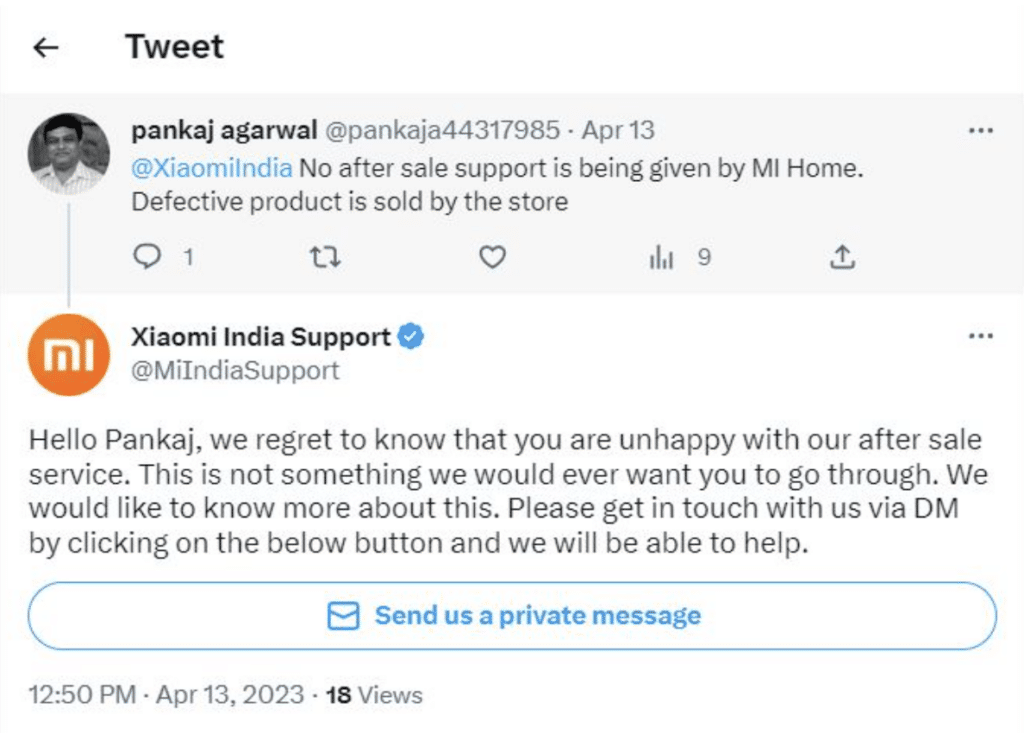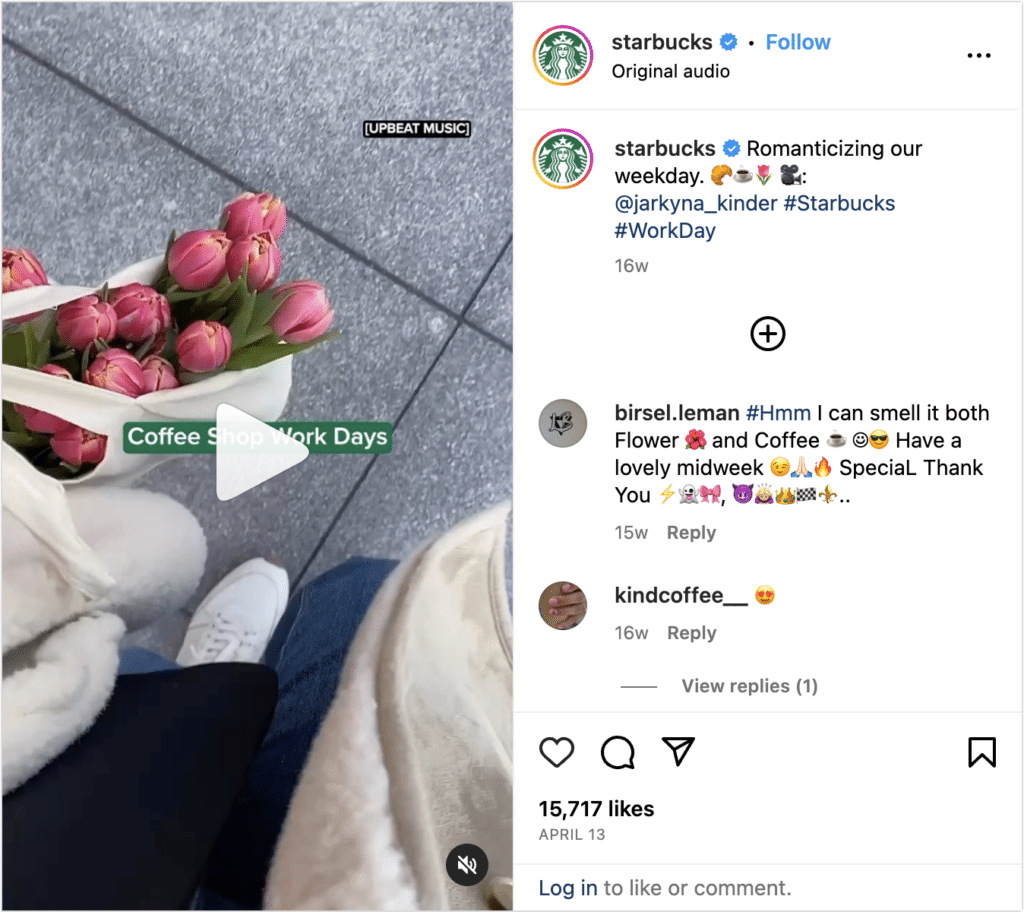As a business owner or marketer, you know how critical it is to keep your customer satisfied.
According to a report, businesses worldwide tend to lose a total of seventy five billion dollars to one . six trillion dollars per year. Just because of poor customer service.
However, with so many social channels available around us, it can be quite challenging to decide where to focus your efforts on.
Don’t worry – we are here to help you out.
In this blog, we’ll dive into the world of social media and explore the various ways it can positively improve CSAT scores.
From engaging with customers to collecting feedback, social media provides a unique opportunity to strengthen your relationships with customers and improve overall satisfaction.
So, whether you’re new to social media or a seasoned pro, sit back, relax, and let’s explore how you can use social media to improve CSAT scores and take them to newer heights!
1. Reply to customer comments promptly and proactively
It’s crucial for businesses to respond promptly and proactively to customer inquiries on social media to improve their customer satisfaction score.
Prompt and proactive responses show that a business values its customers and is committed to providing excellent customer service.
Failing to do so can result in negative reviews, loss of customers, and damage to brand reputation. And once there’s a negative review – it might take up to 12 positive customer experiences to make up for one negative customer experience.
2. Use natural language processing (NLP) to discover common feedback themes
When your brand expands, and the number of tickets increases, it may become challenging to analyze each individual low-scoring CSAT response.
If you do not have an internal team to handle extensive data analysis, employing an analysis tool that uses natural language processing (NLP) can efficiently scan all your tickets and identify prevalent themes.
This automated analysis can help you uncover common issues or concerns that customers are experiencing, enabling you to address them proactively.
By identifying these themes, you can focus on resolving the most significant pain points and improving overall customer satisfaction.
3. Keep your customers informed and updated about company updates, promotions, and problems
Nobody likes to be left in the dark, and when customers have information about a product, service, or issue, they feel more in control and confident in their decisions.
When you provide regular updates and communication to your customers, you reduce uncertainty, show that you care about their needs, and are committed to providing excellent customer service.
This can create a positive perception of your brand and increase customer satisfaction and retention.
For example, Salesforce is quite active on its social channels and keeps posting regular updates – be it about an event, a new employee, or any new product launch update.
Such a gesture promotes employee engagement and keeps the audience engaged and informed about what’s happening in the company.
3. Address positive and negative customer feedback publicly on social channels
Publicly responding to positive feedback on your social channel shows that you appreciate and value your customers – and also fosters a sense of community and loyalty around your brand.
Similarly, responding to negative feedback on social media publicly shows that you are committed to providing excellent customer service and have the ability to resolve any issues that arise.
In fact, negative feedback should be given more priority because 96% of customers look for negative reviews specifically.
When addressing negative feedback, you should respond professionally and empathetically, acknowledging the customer’s concerns and offering a solution or explanation as soon as possible.
If you want to do something similar for your brand, having an online community management software might help. With such software, you don’t need to waste time and manually look for negative comments on social media – you’ll get notifications for it all.
4. Make matters non-public when required
Some customer issues are better handled in private to protect the customer’s privacy. If a customer is upset or angry, addressing their concerns in private can prevent the situation from escalating and help to resolve the issue more effectively.
For example, in the image below, one of Xiaomi’s customers has reported a case of dissatisfaction regarding a particular service or product. As the customer was quite frustrated, the team showed empathy and escalated the conversation off-platform to ensure faster resolution and positive brand image.
When you move the conversation to a private channel, you can provide more personalized and detailed assistance, which can lead to a faster and more satisfactory resolution for the customer.
So, while it’s important to be transparent and responsive on social media – there are times when making matters non-public is necessary for the benefit of both your customers and your business.
5. Promote user-generated content to encourage audience engagement
Some customer issues are better handled privately to protect the customer’s privacy. If a customer is upset or angry, addressing their concerns privately can prevent the situation from escalating and help resolve the issue more effectively.
For example, in the image below, one of Xiaomi’s customers has reported a case of dissatisfaction regarding a particular service or product. As the customer was quite frustrated, the team showed empathy and escalated the conversation off-platform to ensure faster resolution and a positive brand image.
When you move the conversation to a private channel, you can provide more personalized and detailed assistance, leading to a faster and more satisfactory resolution for the customer.
6. Understand your audience segments
If you are still treating your whole user base as one size fits all, your feedback survey will undoubtedly be over-generalized and hardly used.
For example, a single set of survey questions would hardly make sense if you want to run surveys on LinkedIn and Instagram because the customer base on the two platforms is completely different. Gen Z media consumption habits, for instance, tend to skew toward short-form video platforms like TikTok and Snapchat, requiring a more dynamic and visually engaging approach compared to other generations.
You can also further segment your users based on their problem areas and history before sending them surveys.
The main thing you want to consider is where the customer is on their journey. For instance, new users vs. loyal customers might have different opinions and past interactions with your product. Therefore, sending them the same survey and expecting positive feedback will be useless.
7. Promote user-generated content to encourage audience engagement
User-generated content (UGC) shows that you value and appreciate your customers – by encouraging them to create and share content related to your brand.
When your prospects see that others are using and enjoying your products or services, they are more likely to give it a shot and make a purchase themselves.
For example, as you can see below, Starbucks loves to promote user-generated content on its social channels, especially Instagram. Even though the reel features Starbucks, it wouldn’t have gotten global traction if it wasn’t shared from the brand’s official channel.
8. Streamline repetitive tickets through automation
When repetitive tickets consume a substantial amount of time, agents may struggle to provide high-quality responses when they are genuinely needed.
Support tickets such as “Where is my order?” inquiries, “How to track order,” and other repetitive issues divert time and resources away from more complex tickets that demand detailed and personalized attention.
When agents can allocate their undivided attention and exceptional effort to the support tickets that need live support, customer satisfaction will likely improve. According to a report, 60% of customer service teams have automated collecting 65% of customer feedback.
With automation, customers can quickly find the information they need, reducing the volume of repetitive tickets requiring agent intervention.
9. Enquire with customers who provide low CSAT scores
While CSAT surveys provide a general understanding of customer satisfaction, they may not always provide the depth of information you require. Even with the inclusion of an open-ended field, you may receive limited details about the reasons behind a specific rating.
When customers assign a low CSAT score to your company, proactively contacting them for more detailed feedback can uncover valuable insights on avoiding low scores in the future.
By initiating conversations with these customers, you can delve deeper into their concerns, understand the specific aspects of their experience that contributed to their dissatisfaction, and gain a clearer perspective on potential areas for improvement.
Best Social Media Tools to Improve Customer Interactions
Statusbrew
Statusbrew is a full-fledged social media engagement tool that supports Instagram, Facebook, Twitter, YouTube, LinkedIn, and even Google My Business.
It empowers you to make each customer feel valued and ensures long-term loyalty by responding quickly to customer queries across social with Statusbrew’s unified inbox.
You can automatically hide, delete, reply & assign conversations to your team based on their status, type, and social channel.
Statusbrew’s integration instantly notifies you about any conversations on the most convenient channels – Slack, Mobile, Desktop, & Email.
Freshdesk
Freshdesk is widely recognized as a leading customer support software that provides exceptional service to businesses and their customers.
With its robust features and user-friendly interface, Freshdesk can help businesses streamline customer support processes, deliver excellent service, and build lasting customer relationships.
Freshdesk automatically converts customer emails, chats, or social media messages into support tickets, ensuring no customer request goes unnoticed.
Its omnichannel support allows customers to reach out through their preferred communication channel, where agents can handle customer interactions from a single interface – ensuring consistent and efficient support across channels.
Besides, customers can view and track their submitted tickets on Freshdesk, access knowledge base articles, engage in community forums, and communicate with support agents, which enhances transparency and empowers customers to participate in the support process actively.
Hootsuite
Hootsuite maintains an extensive library of articles, tutorials, and guides that cover a wide range of topics related to their platform. Whether learning how to schedule posts, analyzing social media metrics, or troubleshooting technical issues, customers can find step-by-step instructions and helpful resources within the knowledge base.
This approach ensures that Hootsuite remains responsive to user needs and continuously improves its product and support offerings based on customer input.
Besides, Hootsuite provides tools to engage with customers across various social media platforms effectively. Businesses can easily respond to comments, messages, and mentions, demonstrating their commitment to customer service.
Hootsuite’s unified inbox aggregates all incoming messages and notifications, streamlining the engagement process and preventing any customer inquiries from slipping through the cracks.
Last but not least, it enables businesses to stay updated on customer conversations, brand mentions, and industry trends in real-time. By actively monitoring social media, businesses can engage with customers promptly, address concerns, and participate in relevant discussions.
But one major hesitation most businesses face is the steep price point of Hootsuite. If that seems a lot, you can always go for the Hootsuite alternatives, which offer similarly advanced features but at a much lower price.
Conclusion
There you have it – by using social media platforms to connect with their customers, businesses can gather valuable feedback, resolve issues in real time, and create a more personalized experience for their customers.
However, it’s important to remember that social media is just part of a comprehensive customer experience strategy. To improve CSAT scores, businesses must also focus on providing excellent customer service across all touchpoints.
By embracing social media as a customer service tool and prioritizing the customer experience, businesses can increase customer satisfaction and drive long-term success.
So, why not leverage the power of your social media to improve CSAT scores today?
Originally published Feb 15, 2023, updated Jan 09, 2025







